Physical Address
304 North Cardinal St.
Dorchester Center, MA 02124
Isolated lunotriquetral (LT) ligament tears are rarely treated acutely. Therefore, the traditional treatment approaches have been to attempt ligament repair, ligament reconstruction, or LT fusion.
Ligament repair is often not an available option for chronic injuries because the remaining ligamentous substance is inadequately substantive to repair.
LT fusion has a relatively high complication and nonunion rate (up to 50%).
LT reconstruction has traditionally been performed with a distally based extensor carpi ulnaris (ECU) weave. Nevertheless, other techniques have been published, including a weave using palmaris longus, dorsal capsulodesis using the dorsal radiocarpal ligament, or our preferred technique, using an Arthrex InternalBrace.
When opting for ligament reconstruction, we have come to favor the InternalBrace method because it provides an exceedingly strong construct without the need for the cumbersome creation of bone tunnels.
The disadvantage of this technique is the cost of the equipment that some facilities may not be able to absorb.
Some surgeons have advocated for the use of ulnar shortening osteotomy to treat symptomatic LT ligament injury as long as imaging and arthroscopy confirm no joint degeneration and no triangular fibrocartilage complex (TFCC) or scapholunate (SL) ligament injury. We have used this approach as well.
Indications for this procedure include:
Symptomatic LT dissociation without evidence of wrist arthritis
If volar intercalated segment instability (VISI) is seen on x-ray (see section on “Imaging”), it should be passively correctable and confirmed with fluoroscopy before pursuing reconstruction.
Continued wrist pain with associated LT injury despite conservative management
Ruled out concomitant or other reasons for ulnar-sided wrist pain
Evidence of arthritic changes in the radiocarpal or midcarpal joints is a contraindication for the procedure.
Another contraindication is VISI that cannot be manually reduced with traction and/or manipulation.
Notable ulnar positive variance is a relative contraindication to performing LT reconstruction alone.
The patient complains of ulnar-sided wrist pain that may have been preceded by trauma.
Common causes of ulnar-sided wrist pain include ulnar abutment syndrome, ECU subluxation, distal radial ulnar joint (DRUJ) instability, TFCC pathology, pisotriquetral arthritis, and hook of hamate fractures.
Provocative maneuvers can help differentiate LT pathology from other causes of ulnar-sided wrist pain.
Palpate the LT interval; with the wrist in 30 degrees of flexion, the interval is found dorsally between the fourth and fifth compartments, one fingerbreadth distal to the DRUJ.
When conducting an LT compression test, radially directed pressure over the triquetrum may elicit pain with LT instability ( Fig. 23.1 ).
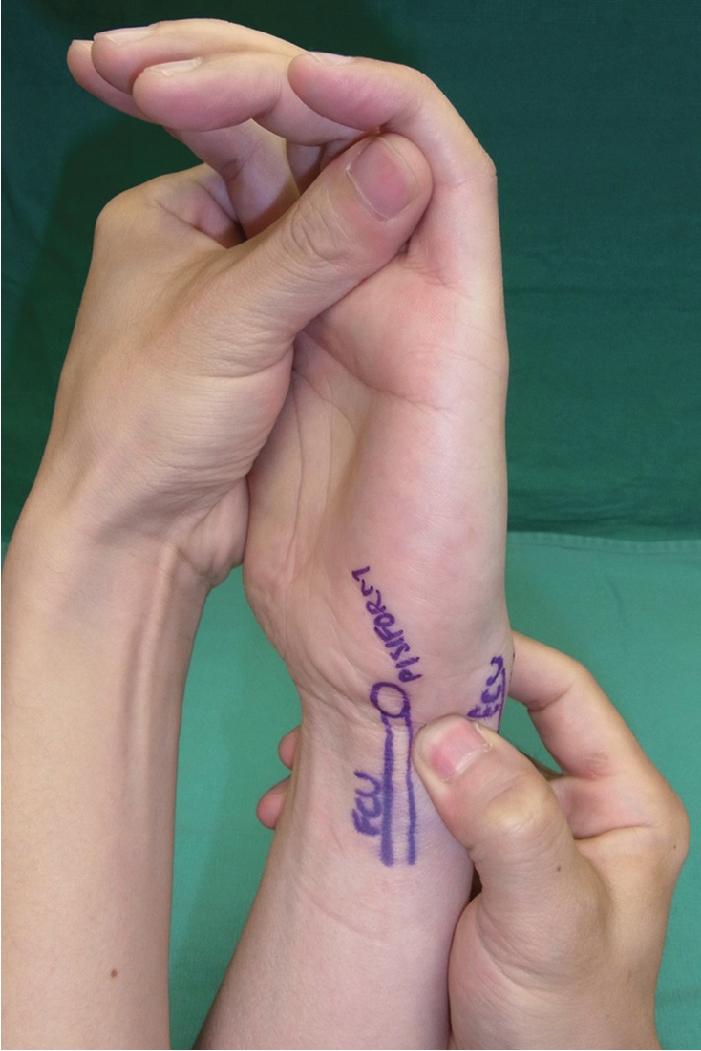
The LT ballottement test is similar to the LT compression test, but here one hand controls/stabilizes the wrist and lunate while the other applies radially directed force on the triquetrum, driving it into the lunate.
With the LT shear test, stabilizing the lunate centrally and directing the triquetrum volarly and dorsally elicits pain, crepitus, and excessive mobility compared with the contralateral side when LT instability is present ( Fig. 23.2 ).
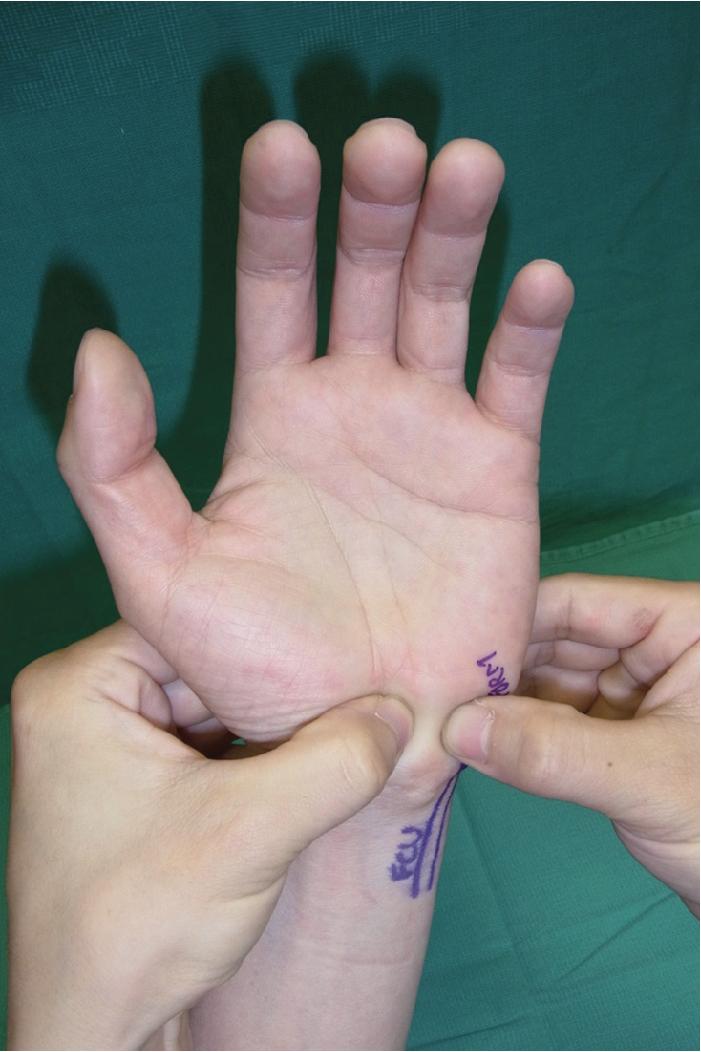
Plain radiographs are often normal with LT dissociation. One may see a slight widening of the LT interval ( Fig. 23.3 ) or a step-off or disruption of Gilula’s proximal arc between the lunate and triquetrum.
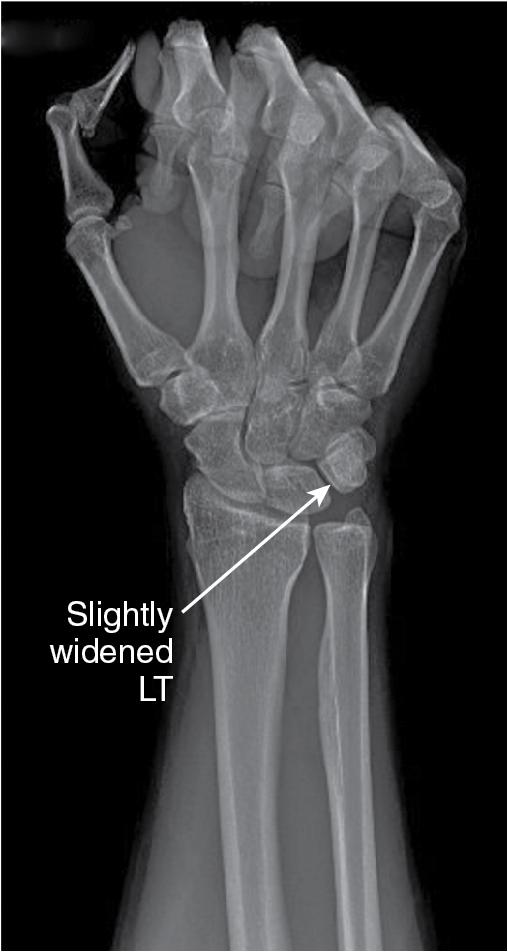
VISI may be present. This can be appreciated on lateral x-ray. The lunate flexes with the scaphoid, making the SL angle too acute (<30 degrees, normal is 30 to 60 degrees; Fig. 23.4 ).
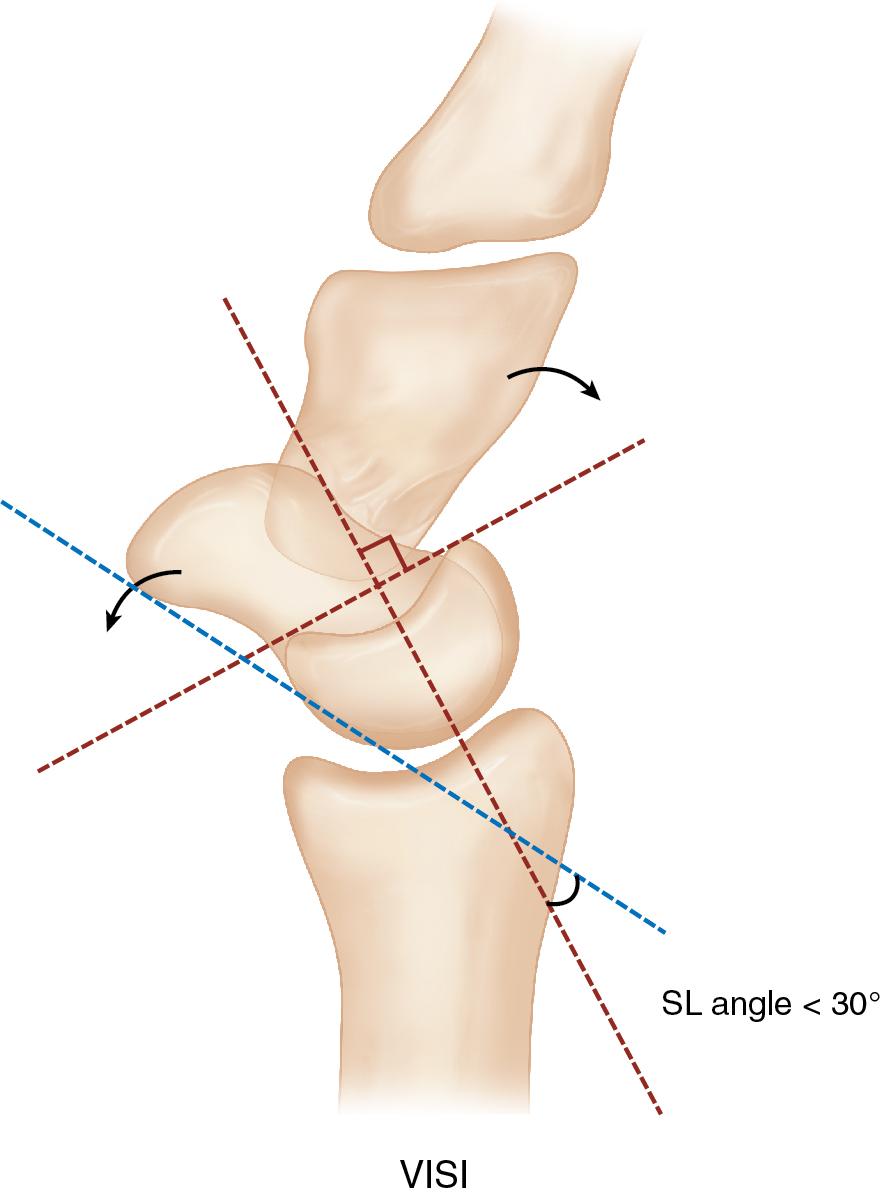
Arthroscopy can be used to diagnose LT dissociation. Normally, the lunate (L) and triquetrum (T) are tightly articulated, but with dissociation, a gap or step-off can be seen on arthroscopy. A probe can be used to separate the lunate from the triquetrum via the midcarpal portal ( Fig. 23.5 ). This image demonstrates Geisler grade III instability, where a probe can be passed easily between the two bones.
We advocate performing wrist arthroscopy to survey the entire wrist joint before entertaining reconstruction.
Concomitant injuries can be identified and the amount of gapping can help decide on the reconstructive options, including assessing the articular wear that may preclude ligament reconstruction.
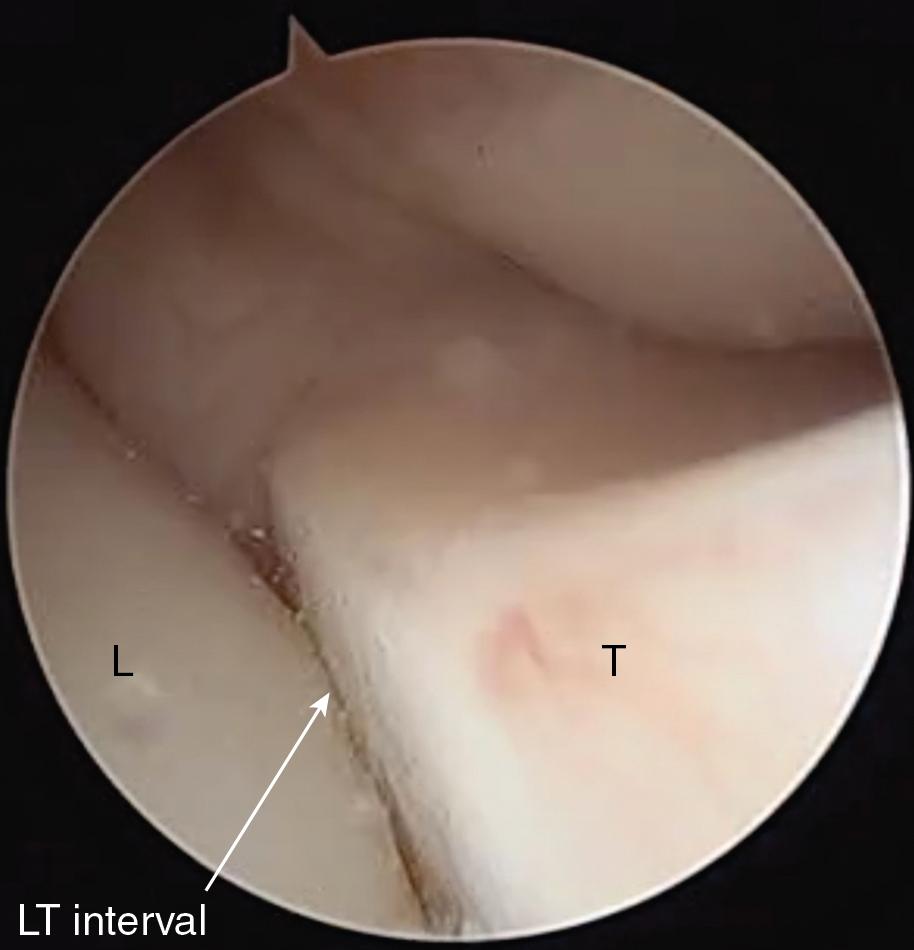
The LT ligament is a C-shaped ligament, but unlike the scapholunate ligament in which the dorsal fibers confer the most support, the volar fibers of the LT ligament are strongest.
Secondary stabilizers of the LT ligament include the ulnocarpal (ulnolunate, ulnocapitate, and ulnotriquetral ligaments), midcarpal (triquetrohamate and triquetrocapitate ligaments), and dorsal carpal (dorsal intercarpal and dorsal radiotriquetral/radiocarpal) ligaments ( Figs. 23.6 and 23.7 ).
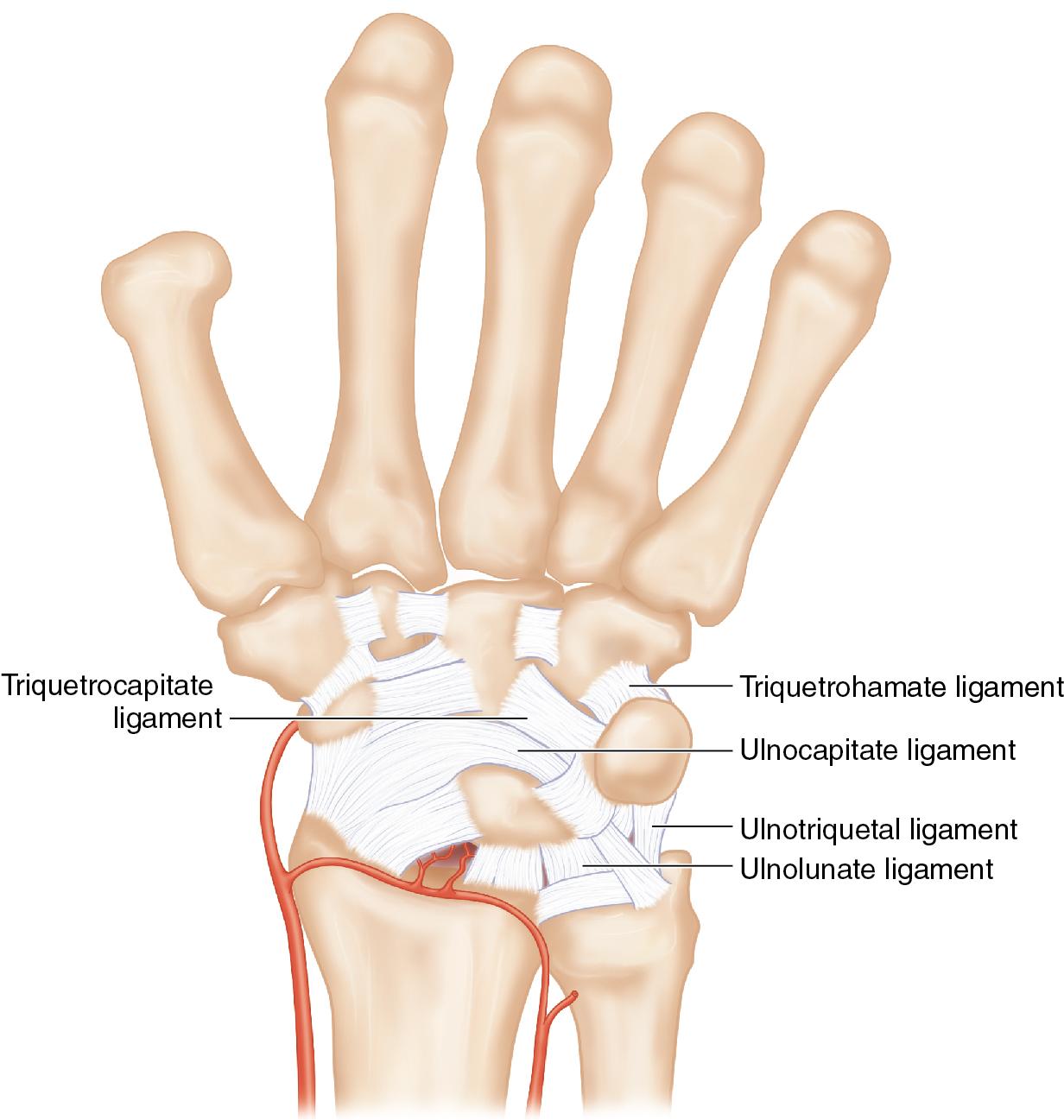
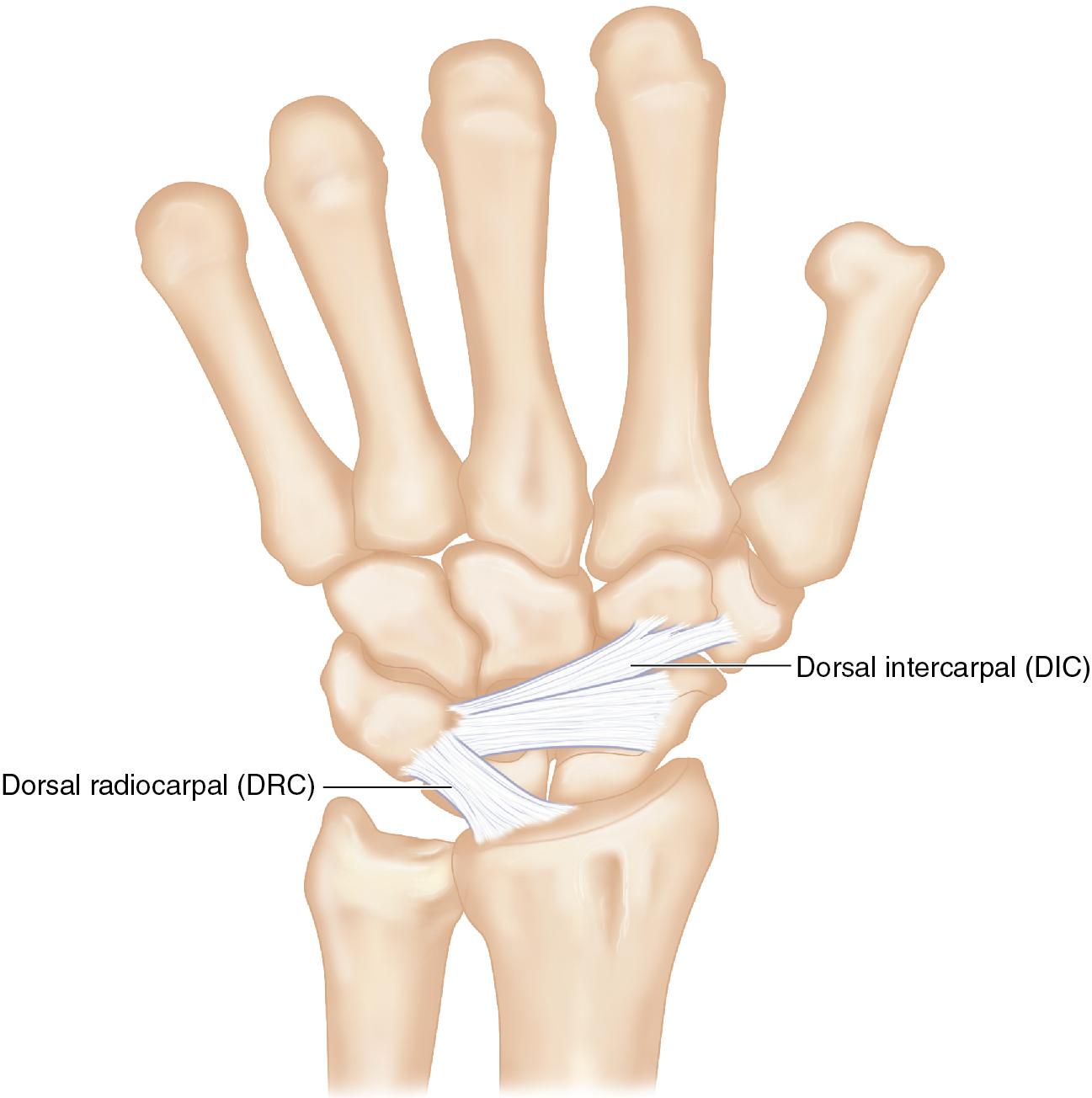
With injury to the LT ligament and failure of the secondary stabilizers, the lunate and triquetrum dissociate, permitting the scaphoid and lunate to flex together, resulting in VISI.
The patient is positioned supine, with arm extended on an arm board.
A sterile tourniquet is used on the upper arm.
A 6- to 8-cm longitudinal incision is designed over the dorsal wrist between the fourth and fifth compartments ( Fig. 23.8 ).
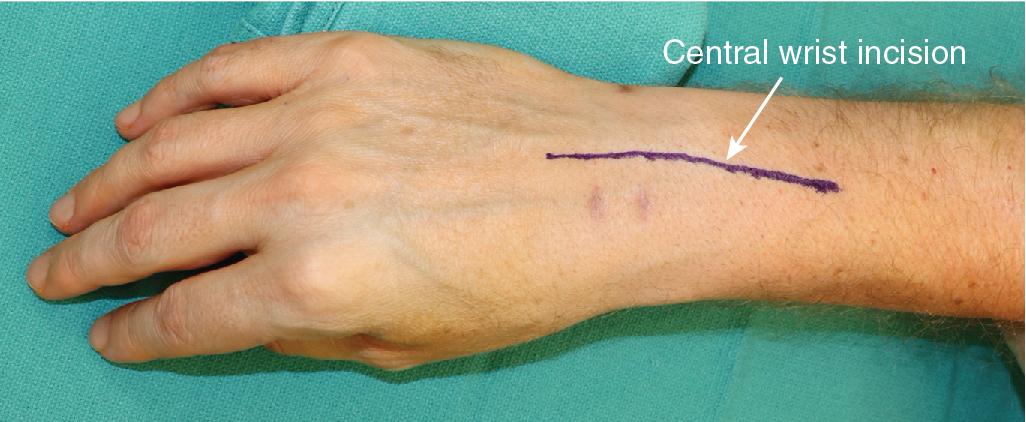
After protecting the fourth and fifth compartment tendons, sharply enter the wrist and expose the LT interval ( Fig. 23.9 ).

Branches of the dorsal ulnar sensory nerve should be identified and protected. This nerve branches off from the main ulnar nerve about 8 cm proximal to the pisiform. It then passes dorsal to the flexor carpi ulnaris (FCU) and pierces the deep fascia about 5 cm from the pisiform. It reaches the dorsum of the hand after coursing in close relation to the ulnar styloid process ( Fig. 23.10 ).
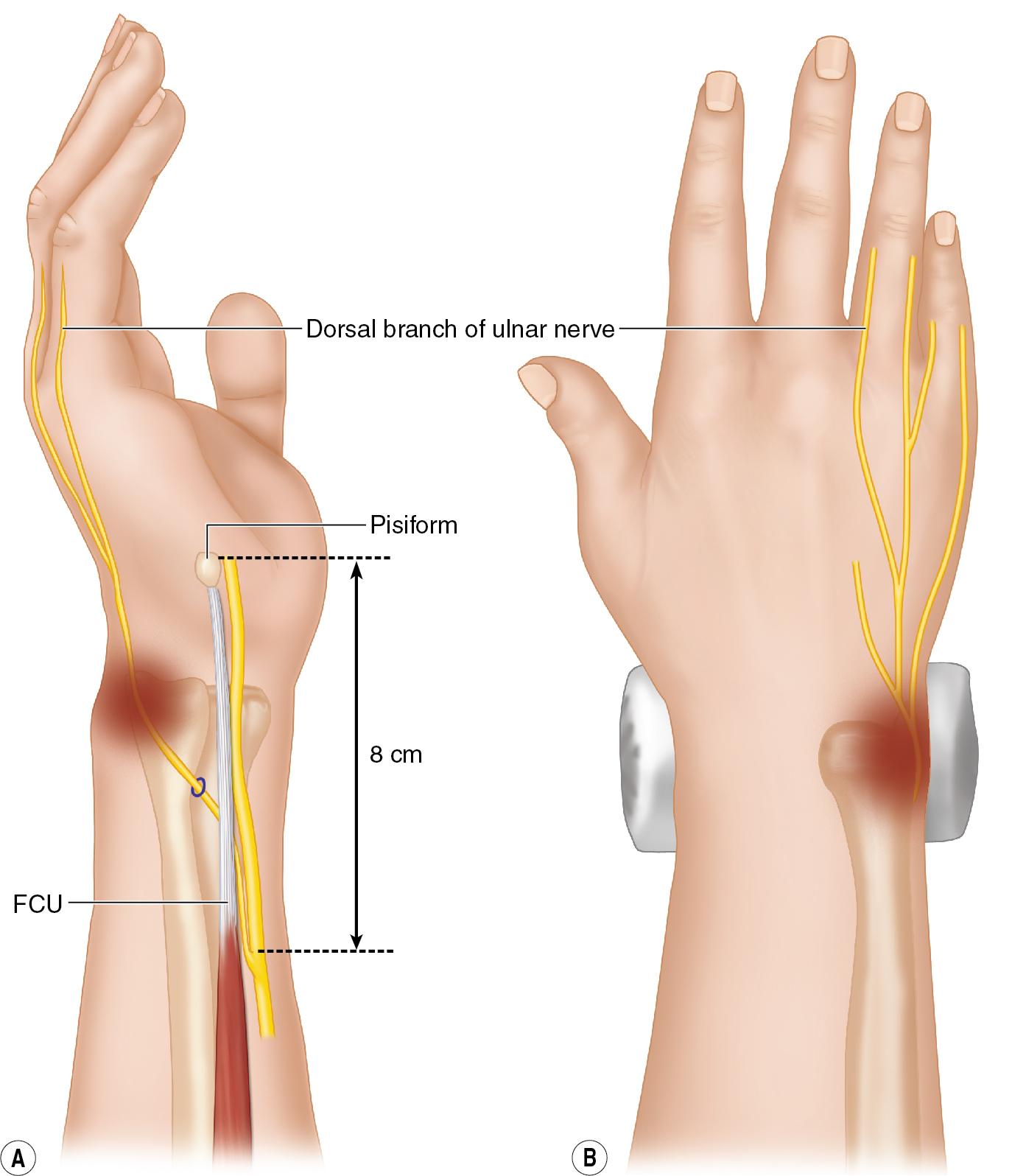
Become a Clinical Tree membership for Full access and enjoy Unlimited articles
If you are a member. Log in here